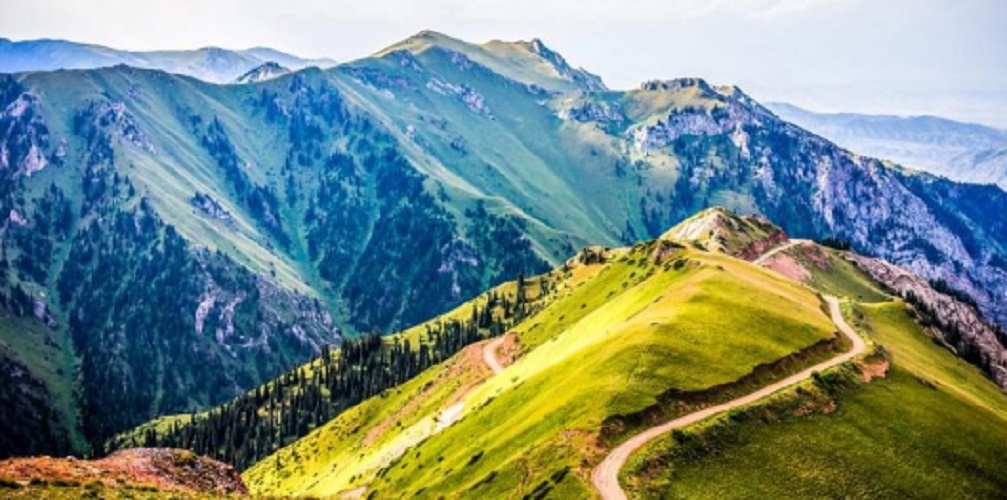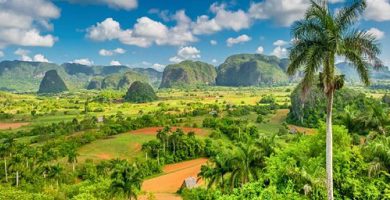What is a mountain?
We explain what a mountain is, how it forms and its component parts. In addition, its climate, vegetation and the highest mountains.
-
What is a mountain?
It is called a mountain to a natural elevation of the terrain , product of tectonic forces (orogenesis), which generally amount to more than 700 meters in height from its base. These topographic elevations are usually grouped in mountain ranges or mountain ranges, which can be short or prolonged over kilometers away.
The mountains have attracted the attention of human beings since ancient times, usually associated culturally with elevation, closeness with God (the sky) or as a metaphor for sustained efforts to obtain greater or better perspectives.
In fact, mountaineering is a sporting activity associated with great physical demands and an enormous importance in our consideration regarding the known percentage of the planet.
There are many ways to classify mountains. For example, according to their height they can be classified into (from least to greatest): hills, medium mountains and high mountains. Similarly, they can be classified according to their origin in: volcanic, folded (product of a tectonic fault) or folded-fractured.
And finally, the mountain groups can be classified according to their way of grouping: they talk about mountain ranges if they meet longitudinally , and of massifs if they do it in a more compact or circular way.
The mountains cover a significant portion of the land area: 53% of the Asian continent, 25% of the European, 17% of the Australian and 3% of the African, for a total 24%. It is estimated that 10% of the world’s human population inhabits mountains , and all river water is necessarily formed at the top of its tops.
-
Mountain formation

The formation of mountains is called orogenesis, which are then modified by external factors such as erosion or tectonic movements. The mountains have their origin in deformations of the earth’s crust , usually in the meeting places of two tectonic plates that, when exerting force against each other, cause a folding of the lithosphere , which sends a vein down and another up , forming an elevation of different magnitude.
In certain cases, this shock process causes a layer to submerge in the subsoil and be subjected to melting by high temperatures, forming magma that can subsequently emerge towards the surface forming volcanoes .
-
Parts of the mountain
Mountains are usually made up of the following parts:
- Foot or base . The lowest part of the formation, usually at ground level.
- Top, peak or cusp . The top and last part, where the mountain ends, reaching its highest possible height.
- Hillside or skirt . The sloping portion of the mountain that connects the foot to the top.
- Valley . The portion of the hillside that lies between two peaks (two mountains) constituting a small depression or sinking.
-
Mountain weather

The climates mountain usually depend on two factors: the latitude you are in and the elevation mountain range. At higher altitude , there is always lower temperature and lower atmospheric pressure, at a usual rate of 5 ° C for every kilometer of height gained.
The same applies to precipitation, more frequent at higher elevations, so it is possible to find more humid areas high than in the plain, especially where the great rivers are born. If the ascent continues, the humidity and the water turn to snow and eventually ice.
-
Mountain vegetation

Mountain vegetation depends a lot on the weather and the location of the mountain. However, it usually occurs in a staggered way, by steps, as it climbs up the slope. Thus, on the lower floors, near the foot, there is abundant vegetation in the surrounding plains, or mountain forests, with leafy and tall trees.
But as it rises , the most cold-resistant species predominate , which take advantage of moisture reserves and abundance of rainfall. Above the area of trees, the lack of oxygen is felt and the vegetation loses size, becoming grassland again, with shrubs and grasses of small size. The tops therefore tend to be more arid, especially those covered with ice and snow.
-
The five highest mountains

The five highest mountains in the world are:
- Mount Everest . At 8,846 meters high, it is the highest mountain in the world, located on the crest of the Himalayas.
- K2 mountains . One of the most difficult mountains to climb in the world, with 8,611 meters above sea level. It is located between China and Pakistan.
- Kachenjunga . Located between India and Nepal, it is 8,598 meters high. Its name translates as “The five treasures among the snows.”
- Aconcagua . With 6,962 meters high, this mountain located in the Argentine Andes, in the province of Mendoza, is the highest peak in America.
- Snowy Eyes of the Savory . It is a stratovolcano that is part of the Andes Mountains, on the border between Chile and Argentina. It is the highest volcano in the world, with 6891.3 meters high.





